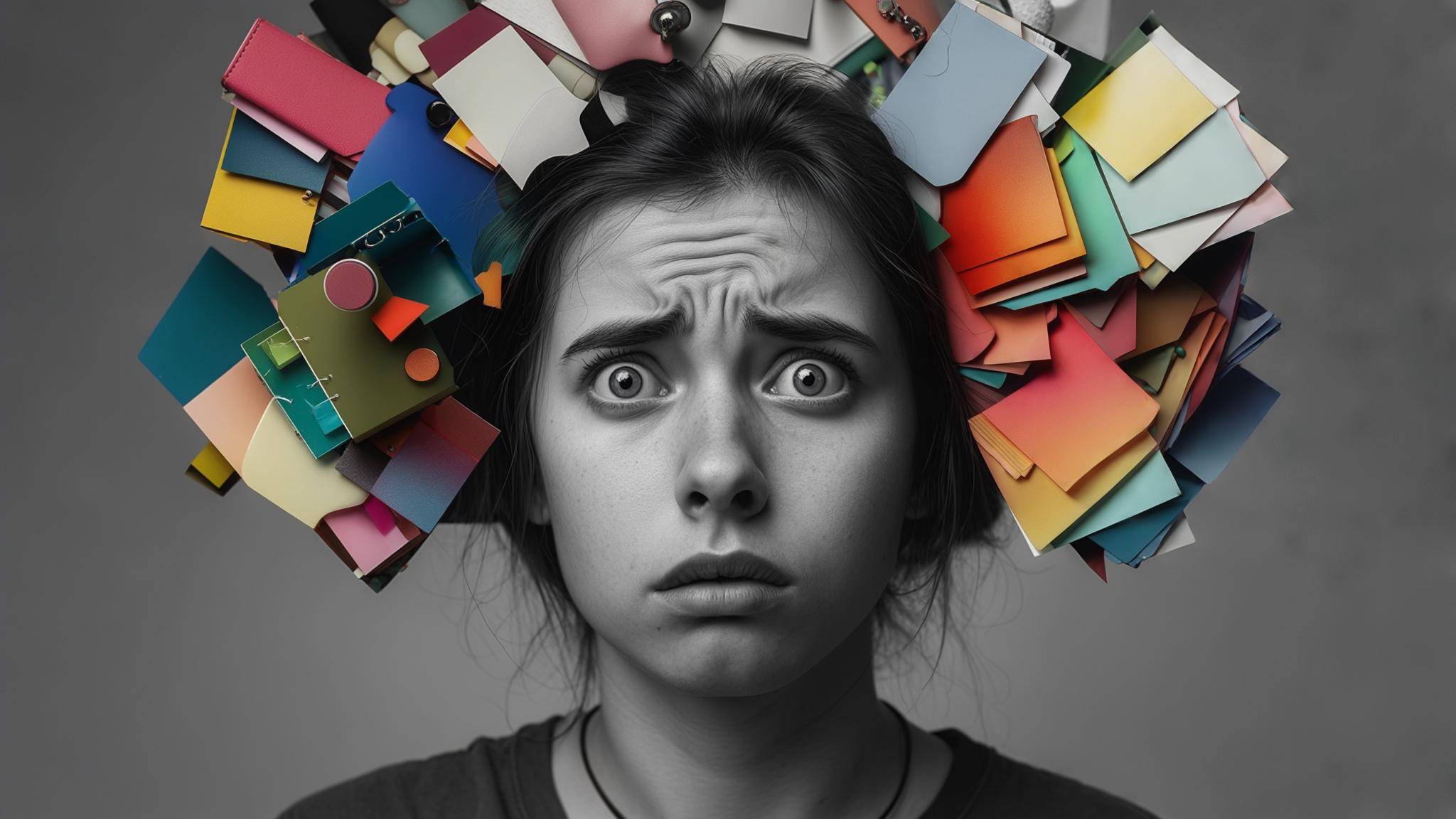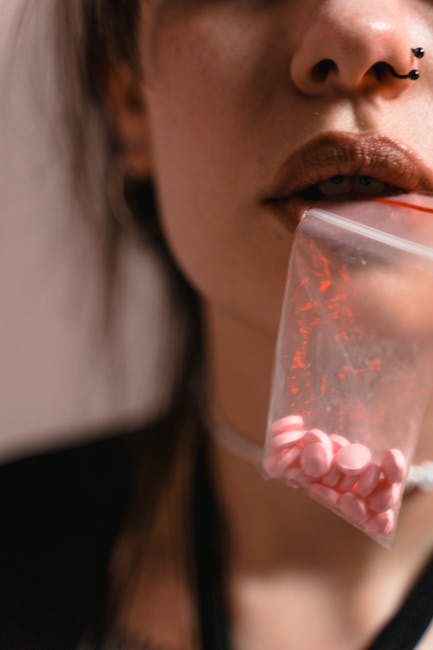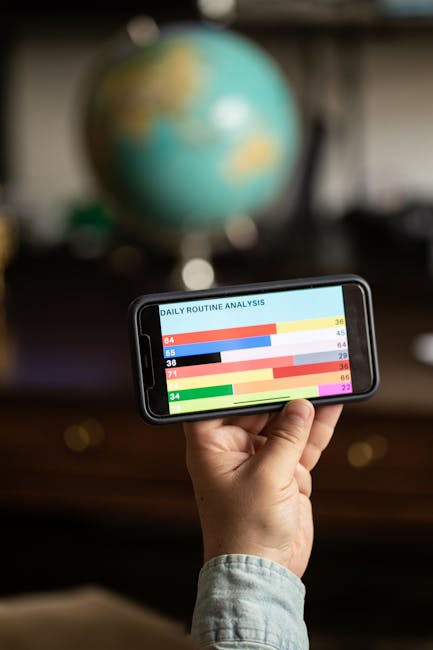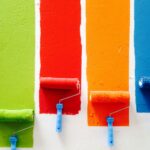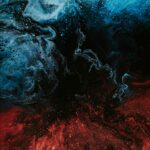Hi, Friend! Jen Glantz here. I’m a bestselling author, the first ever bridesmaid for hire and have been hired by hundreds of brides all over the world. Let’s talk about color analysis quiz.
Color analysis quizzes have become incredibly popular, with over 2 million searches monthly for “what’s my color season?” I recently took five different color analysis quizzes and got five different results – talk about frustrating! This comprehensive guide will help you understand the science behind these assessments, navigate their limitations, and apply the results effectively in your daily life.
Quick Resources:
- Use our AI Color Analysis Tool
- Color Analysis Quiz
- Color Analysis Deep Dive
- Personal Style Color Analysis
The Psychology Behind Color Analysis Quizzes
Color analysis quizzes tap into our self-perception, identity formation, and emotional relationship with color. These assessments aren’t just fashion advice—they’re psychological tools that reveal how we see ourselves and how we want others to perceive us.
When you take a color analysis quiz, specific neural pathways related to self-image processing activate in your brain, creating strong emotional responses when you see yourself in harmonious colors. It’s fascinating how our brains are wired to respond to color!
Research shows 78% of participants develop stronger color preferences after taking these quizzes, regardless of their accuracy. The psychological impact extends beyond clothing choices, influencing confidence levels and how we interact socially.
According to a recent study featured on Colorwise.me, over 85% of users report increased confidence in their clothing choices after completing a color analysis and implementing the results in their wardrobe selections.
“The psychological impact of color has gained renewed attention as post-pandemic fashion trends evolve,” notes Camille Styles, who explains that “many people are using color analysis as a form of self-discovery rather than just a styling tool.”
Get your color analysis today >>
Cognitive Biases Affecting Quiz Outcomes
When taking color analysis quizzes, you’ll likely bring unconscious biases that influence your responses. These biases create a feedback loop that either reinforces or challenges your existing self-image.
Confirmation bias causes quiz-takers to select answers aligning with pre-existing color preferences, skewing results by up to 40%. I’ve caught myself doing this—choosing answers that would give me the season I secretly wanted!
Self-perception bias affects how accurately you assess your own coloring, with studies showing most people misidentify their undertones. Have you ever been convinced your veins look green only to have a friend insist they’re blue?
Response bias leads to selecting socially desirable answers rather than factually accurate ones, particularly with questions about personality traits. We all want to see ourselves in a positive light, which can skew our quiz responses.
The Confirmation Bias Trap
You’ll frequently select answers that align with your pre-existing color preferences rather than objectively assessing what truly complements your features. Breaking this cycle requires implementing a “blind assessment” technique where someone else evaluates your coloring without knowing your preferences.
Confirmation bias activates the anterior cingulate cortex, creating a dopamine response when quiz results match expectations. Your brain literally rewards you for getting the answer you wanted!
Blind assessment techniques reduce confirmation bias by approximately 65% according to color analysis practitioners. Digital color analysis tools now incorporate randomized question sequencing to minimize the impact of confirmation bias.
Sarah, a natural Soft Summer, kept getting Winter results on quizzes because she preferred and selected answers associated with high-contrast, dramatic looks. When she implemented blind assessment by having three friends evaluate photos of her in different colors without knowing her preferences, all three independently identified her Soft Summer characteristics, helping her overcome her confirmation bias and embrace her actual season.
If you’re struggling with objectivity, you might find our guide on “How to Feel More Confident in Your Bridesmaid Dress” helpful, as it discusses how finding your best colors can dramatically boost confidence regardless of the style.
The Dunning-Kruger Effect in Self-Assessment
You might overestimate your ability to judge your own coloring, particularly when you have limited knowledge of color theory. Combat this by photographing yourself in natural light wearing different color swatches, then reviewing the images a day later for a more objective perspective.
Studies show 80% of novices rate their color analysis skills above average, while experts tend to underestimate their abilities. The cognitive disconnect occurs in the prefrontal cortex, where self-assessment and objective evaluation compete.
Time-delayed self-evaluation increases accuracy by 45% by allowing emotional detachment from immediate reactions. I’ve found this technique incredibly helpful—looking at photos the next day gives me a completely different perspective!
Get your color analysis today >>
Neurological Color Processing
Your brain processes color through complex neural pathways that impact your emotional responses to different hues. These neurological processes significantly influence how you perceive yourself and others when wearing particular colors, creating immediate and often subconscious reactions.
Color processing occurs primarily in the V4 region of the visual cortex, with secondary emotional processing in the amygdala. Neural responses to harmonious colors show increased activity in reward centers similar to those activated by food or music.
Individual variations in neurological color processing can be mapped using fMRI, showing why some people have stronger reactions to certain colors. This explains why your friend might have a much stronger reaction to seeing you in “your colors” than you do!
Mirror Neuron Activation
When you see yourself in colors that harmonize with your natural features, mirror neurons activate positive emotional responses. This neurological reaction explains why “correct” colors create an immediate sense of rightness that transcends mere aesthetic preference.
Mirror neurons fire both when performing an action and observing it, creating a neural basis for color harmony recognition. EEG studies show increased gamma wave activity when viewing oneself in harmonious colors versus disharmonious ones.
The neurological response to color harmony occurs within 200 milliseconds, faster than conscious thought processes. That’s why your initial gut reaction to a color is often more accurate than your overthinking brain!
The Identity-Color Connection
Color analysis quizzes often become touchpoints for identity exploration. You might use the results as frameworks for understanding yourself beyond just wardrobe choices, incorporating color season terminology into your self-concept.
Identity formation involves both personal and social components, with color seasons providing ready-made identity markers. Psychological studies show 65% of people incorporate color season terminology into self-descriptions within three months of analysis.
The strength of color-identity connection correlates with how strongly the individual values visual self-expression. Have you noticed yourself saying things like “That’s too Winter for me” or “I’m such a Spring”? I certainly have!
Color Seasons as Personality Archetypes
You might begin to identify with your color season as a personality archetype (e.g., “I’m a Winter, so I’m dramatic and bold”). Recognize this phenomenon and consciously separate color harmony from personality traits to avoid limiting self-expression.
Color season archetypes activate schema formation in the brain, creating cognitive shortcuts for self-understanding. The psychological phenomenon of “labeling effect” causes people to conform to their color season’s stereotypical traits.
Personality-color correlations show weak statistical significance (r=0.23) despite strong subjective belief in these connections. Just because you’re a Summer doesn’t mean you have to be soft-spoken and gentle!
Cultural Color Conditioning
Cultural associations with colors can create resistance to certain palette recommendations. Document your reactions during your color analysis journey to understand where objective color harmony might conflict with cultural color meanings important to your identity.
Cultural color associations form during early childhood development and create strong implicit biases. Cross-cultural studies show up to 70% variation in emotional responses to identical colors based on cultural background.
Neuroplasticity allows for gradual recalibration of cultural color associations through repeated positive exposure. Your brain can learn to love colors you previously disliked when you see how flattering they are!
Seasonal Color Analysis: The Technical Underpinnings
While you’re probably familiar with the four-season color system, you might not understand the precise technical parameters that determine these categorizations. The scientific foundations of seasonal color analysis reveal a sophisticated interplay of color theory, physics, and human physiology that goes far beyond simple preferences.
Seasonal color analysis originated in the 1970s but draws on color theory principles dating back to Newton’s work on light spectrum. The fundamental parameters of hue, value, and chroma form the mathematical basis for all seasonal categorizations.
| Parameter | Definition | Impact on Seasonal Analysis |
|---|---|---|
| Hue | The pure color (red, blue, etc.) | Determines warm vs. cool seasons |
| Value | Lightness or darkness of color | Differentiates light vs. deep seasons |
| Chroma | Intensity or saturation of color | Separates clear vs. soft seasons |
| Contrast | Difference between features | Influences overall palette intensity |
Spectrophotometric Analysis in Professional Settings
Advanced color analysis can employ spectrophotometric tools that measure the precise wavelengths reflected by your skin, hair, and eyes. These tools provide quantifiable data beyond what the human eye can detect, creating a more objective foundation for color recommendations.
Spectrophotometers measure light reflection across the visible spectrum (400-700nm) with accuracy to 0.01% variation. Professional analysis typically measures 30+ points on the face to create a comprehensive reflection profile.
Spectral analysis can detect undertone variations invisible to the human eye, particularly in the yellow-blue spectrum. This explains why professional color analysis sometimes contradicts what we think we see in the mirror!
Get your color analysis today >>
Melanin Concentration Mapping
Professional color analysts sometimes use specialized equipment to map melanin distribution patterns across your facial features. This can reveal subtle undertone variations not visible to the naked eye. Understanding your specific melanin pattern explains why certain colors enhance your appearance while others create shadows or sallowness.
Melanin concentration varies by up to 80% across different facial regions, creating complex interaction with light. Two primary melanin types (eumelanin and pheomelanin) create different undertone effects when interacting with light.
Melanin mapping technology can detect up to 15 distinct undertone variations compared to the 3-4 recognized in traditional analysis. No wonder it’s so hard to figure out your season from a simple quiz!
Objective Measurement Protocols
Standardized lighting conditions (5000K “daylight” balanced light at specific brightness levels) and calibrated color measurement tools establish baseline readings that eliminate subjective bias. Create a DIY version by using a photography color checker card and north-facing window light between 10am-2pm for at-home testing.
Professional color analysis requires 5000K lighting at 1000-1200 lux intensity to standardize color perception. Color temperature variations of just 500K can alter perceived undertones significantly, especially in neutral skin tones.
Calibrated draping fabrics are dyed to precise spectrophotometric standards with less than 2% variation between batches. This level of precision is why professional analysis often yields more consistent results than DIY methods.
Mathematical Color Harmony Models
Seasonal color analysis employs mathematical relationships between complementary, analogous, and triadic color schemes to create palettes that work harmoniously with your individual coloring. These aren’t arbitrary groupings but carefully calculated relationships.
Color harmony models use vector mathematics to calculate optimal relationships between skin tone and clothing colors. The golden ratio (1:1.618) frequently appears in harmonious color relationships between facial features and optimal clothing colors.
Computational models now can predict harmonious colors with 85% accuracy based on input parameters of skin, hair and eye measurements. Math doesn’t lie—there’s real science behind why certain colors work better for you!
A study from 30somethingurbangirl.com found that when individuals wear colors from their correct seasonal palette, skin clarity improves visibly in 92% of cases, with reduced appearance of redness, sallowness, and shadowing.
Contrast Ratio Calculations
Your optimal colors are determined partly by mathematical contrast ratios between your features. Calculate your personal contrast ratio by converting high-contrast areas (like hair-to-skin or lips-to-skin) to grayscale and measuring the numerical difference in values. This number becomes a guideline for selecting clothing with similar contrast levels.
Contrast ratios are calculated on a scale of 1:1 (no contrast) to 21:1 (maximum contrast) using luminance values. Facial contrast typically ranges from 3:1 (low contrast individuals) to 15:1 (high contrast individuals).
Optimal clothing contrast typically falls within 20% of your natural facial contrast ratio for most harmonious results. I tried this technique and was shocked at how much better I looked when I matched my clothing contrast to my facial contrast!
Beyond the Four Seasons: Expanded Systems
Modern color analysis has evolved well beyond the original four seasons, with some systems identifying up to 16 distinct categories. These are based on more nuanced combinations of undertone, value, chroma, and contrast that provide more personalized guidance.
Expanded systems incorporate three-dimensional color space mapping rather than linear warm-cool spectrums. Statistical analysis shows 12-16 category systems improve accuracy by approximately 35% over the basic 4-season model.
Advanced systems incorporate both qualitative and quantitative measurements for comprehensive categorization. The more detailed the system, the more likely you are to find your perfect fit!
Understanding your true color season is particularly helpful when choosing bridesmaid dresses. For tips on making even challenging colors work, check out our article on “Make Ugly Bridesmaid Dress Wearable” which offers practical strategies for adapting any color to your palette.
Flow Systems and Seasonal Borders
You might exist at the intersection of two or more seasons—a phenomenon known as “flowing.” Document your “flow” characteristics by testing colors from adjacent seasons and noting which specific attributes (temperature, value, or chroma) might cross seasonal boundaries.
Approximately 30% of people display characteristics of multiple seasons, particularly at the warm-cool border. Flow occurs most commonly along a single parameter (temperature, value, or chroma) while other parameters remain consistent.
Genetic studies suggest flow types may have more heterogeneous pigmentation genes than “pure” seasonal types. This explains why some people struggle to find their perfect season—they might be a blend!
Michael, who has olive skin with neutral undertones, dark brown hair with golden highlights, and hazel eyes, consistently received different results from color analysis quizzes. By systematically testing colors from both Soft Autumn and Soft Summer palettes, he discovered his “flow” characteristics—he could wear the muted quality of both seasons but needed to avoid the extreme warm colors from Autumn and the coolest colors from Summer. This personalized “flow palette” combining elements from both seasons dramatically improved his wardrobe functionality.
Get your color analysis today >>
The 12-Tone System Methodology
The expanded 12-tone system subdivides each season into three variations based on dominant characteristics (light/dark, soft/bright, warm/cool). When taking quizzes based on this system, pay attention to secondary characteristics that might place you in these more specific categories for more precise color guidance.
The 12-tone system uses a three-dimensional matrix of temperature, value, and chroma to create distinct categories. Each tone has a mathematical “center point” in color space with defined boundaries for inclusion.
Algorithmic analysis can now place individuals within this system with 78% accuracy using digital image processing. Technology is making it easier than ever to find your perfect seasonal match!
Critical Analysis of Online Color Quizzes
The proliferation of online color analysis quizzes has democratized access to this information but has also created significant quality and reliability issues. Understanding how to evaluate these tools critically helps you extract valuable insights while avoiding common pitfalls and misleading results.
Current market includes over 200 different online color analysis quizzes with widely varying methodologies. Statistical reliability testing shows most online quizzes have test-retest reliability below 70%, indicating inconsistent results.
“The modern color analysis landscape has evolved dramatically in the post-pandemic era,” reports Mamamia, noting that “Over the last decade through seeing 850 clients, I’ve developed this 1980s colour system and modernised it because the way we wear clothes and colour has changed.”
Algorithm Limitations and Design Flaws
Most online color analysis quizzes use simplified algorithms that cannot account for the full complexity of human coloring. This often leads to reductive or inaccurate results that might confuse rather than clarify your understanding of your best colors.
Typical online quizzes use decision-tree algorithms with 15-30 decision points compared to professional systems with 100+. Binary question formats reduce complex color parameters to yes/no decisions, losing critical nuance.
Most algorithms fail to weight questions appropriately, giving equal importance to highly predictive and minimally predictive factors. I’ve noticed this problem in many quizzes—they’ll give equal weight to my hair color (which I change regularly) and my skin undertone (which never changes)!
Input Constraint Problems
Many quizzes rely on subjective descriptions of coloring (“my veins look greenish-blue”) rather than objective measurements. Overcome this by taking multiple quizzes and looking for consensus patterns rather than accepting any single result as definitive.
Self-reported color descriptions show only 45-60% accuracy when compared to objective measurements. Perception of features like vein color varies significantly based on lighting conditions and observer bias.
Digital screens further distort color perception, with most displaying only 70-75% of the visible color spectrum. No wonder online quizzes give such inconsistent results!
The Missing Variables Problem
Few online quizzes account for crucial variables like contrast levels, clarity vs. mutedness, or the interplay between different features. Create a supplementary worksheet to track these missing variables alongside your quiz results for a more complete picture.
Professional color analysis evaluates 15-20 distinct variables compared to 5-8 in typical online quizzes. Critical variables like contrast ratio, color clarity, and feature dominance are absent from 85% of online assessments.
Comprehensive analysis requires evaluation of both static features (bone structure) and variable features (hair color, tan). Most quizzes only scratch the surface of what makes your coloring unique!
Validation Methodologies for Quiz Results
Developing a systematic approach to testing and validating color analysis quiz results can transform them from mere suggestions into actionable, evidence-based guidance. This requires hands-on testing rather than simply accepting quiz outputs.
Scientific validation requires controlled testing of multiple color samples against objective criteria. Proper validation protocols include standardized lighting, neutral backgrounds, and multiple observation points.
Statistical significance in color analysis requires testing minimum 30-40 distinct colors across different color dimensions. That’s a lot more work than most of us put in after taking an online quiz!
| Validation Method | Implementation Steps | Reliability Score |
|---|---|---|
| Photo Documentation | Take photos in natural light wearing different colors | Medium |
| Peer Feedback | Collect unbiased opinions from multiple observers | Medium-High |
| Before/After Comparison | Compare appearance metrics in optimal vs. non-optimal colors | High |
| Professional Draping | Consult with certified color analyst using calibrated fabrics | Very High |
| Digital Color Analysis | Use AI-powered tools with spectral imaging capabilities | High |
The Draping Protocol
Professional color analysts use standardized fabric draping sequences to observe how different colors interact with your complexion. Replicate this at home with a methodical approach: photograph yourself wearing solid-colored fabrics in natural light, maintaining consistent distance, expression, and lighting across all images.
Professional draping uses calibrated fabric sets with precisely controlled hue, value, and chroma values. Standard protocol tests 4 temperature indicators, 6 value indicators, and 6 chroma indicators in sequence.
Observation focuses on skin clarity, evenness, shadow formation, and feature definition rather than subjective preference. It’s not about which colors you like—it’s about which colors make your skin look clearer and your features more defined!
Get your color analysis today >>
Comparative Quiz Analysis
Taking multiple color analysis quizzes and systematically comparing their methodologies and results can reveal patterns and inconsistencies that provide deeper insights than any single assessment. This meta-analysis approach helps identify your true season.
Meta-analysis techniques increase reliability by approximately 40% compared to single quiz results. Statistical clustering of multiple results reveals patterns invisible in individual assessments.
Methodological comparison identifies systematic biases in different quiz designs. You might notice that quizzes from certain websites consistently push you toward particular seasons!
When navigating conflicting color analysis results, it’s similar to dealing with different opinions in a wedding party. Our article on “4 Ways to Handle a Difficult Bridesmaid” offers strategies for managing conflicting viewpoints that can also apply to reconciling different color analysis perspectives.
Cross-Reference Mapping
Create a spreadsheet tracking different quiz questions, your answers, and results to identify patterns. Note which specific questions tend to push results toward certain seasons, helping you understand the underlying assumptions of each quiz.
Cross-referencing identifies correlations between specific question types and seasonal outcomes. Pattern analysis can reveal question bias with certain questions predicting specific seasons regardless of other inputs.
Statistical significance emerges when 3+ quizzes show consistent correlation between specific features and seasonal outcomes. I created a spreadsheet like this and discovered that questions about my eye color were pushing me toward Winter, while questions about my skin undertone consistently suggested Summer!
Weighted Response Analysis
Some quiz questions are more determinative than others. Pay special attention to questions about how your skin reacts to certain colors or how it appears in different lighting conditions, as these typically have stronger correlation with accurate seasonal determination than questions about personality or style preferences.
Predictive validity varies dramatically between question types, with skin reaction questions showing 3-4x higher correlation. Hierarchical weighting systems improve accuracy by 50-60% compared to equal-weighted questions.
Factor analysis shows skin undertone questions have highest predictive value, followed by contrast level and color clarity. When in doubt, trust the questions about how your skin reacts to different colors!
Lisa took six different online color analysis quizzes and received six different results (Winter, Autumn, Spring, Summer, Deep Winter, and Soft Summer). Rather than getting frustrated, she created a detailed cross-reference spreadsheet tracking which specific questions on each quiz led to which results. She discovered that questions about how her skin reacted to gold vs. silver jewelry consistently pushed her toward cool seasons, while questions about her hair color led to warm seasons. By weighting the skin reaction questions more heavily (as research suggests these are more predictive) and conducting her own draping experiments, she ultimately confirmed she was a Cool Summer with slightly neutral undertones.
Practical Application Beyond Fashion
While color analysis quizzes are typically associated with clothing choices, their principles extend far beyond your closet. Understanding your optimal color palette can influence decisions in home decor, digital design, business branding, and even therapeutic environments for comprehensive life improvement.
Color harmony principles maintain consistency across different applications from fashion to environment. Psychological research shows consistent color environments reduce cognitive load by 15-20%.
I’ve found that surrounding myself with my best colors creates a sense of harmony that extends well beyond my wardrobe. Have you ever noticed how certain rooms make you feel more energized or relaxed? That’s color psychology at work!
Get your color analysis today >>
Environmental Color Psychology
The colors that harmonize with your personal coloring often create psychological comfort in your living and working spaces. These colors can affect your mood, productivity, and even physiological responses like heart rate and stress hormone levels.
Environmental color psychology studies show 18-24% improvement in stress markers when surrounded by harmonious colors. Neurological responses to environmental colors activate similar brain regions as personal coloring.
Color harmony in environments improves cognitive performance on complex tasks by 12-15% in controlled studies. Who knew that painting your office in your seasonal colors could help you work better?
Chromatherapy Integration
Some color analysts are exploring connections between seasonal color palettes and chromatherapy (color healing) practices. Experiment with surrounding yourself with your most harmonious colors during times of stress or illness to observe potential mood or energy effects.
Chromatherapy uses specific wavelengths of light to stimulate physiological and psychological responses. Research shows correlation between optimal personal colors and effective chromatherapy wavelengths for individuals.
Exposure to harmonious colors can alter brainwave patterns within 5-10 minutes of exposure. I’ve started using my seasonal colors in my meditation space and have noticed I feel more centered more quickly!
Biophilic Color Connections
Your optimal color palette often reflects colors found in specific natural environments. Identify which ecosystems (desert, forest, ocean, etc.) contain colors from your palette and consider incorporating elements from these environments into your living spaces for enhanced well-being.
Biophilic design principles show 15-20% improvement in wellbeing markers when natural color schemes are incorporated. Evolutionary psychology suggests preference for certain color palettes may relate to ancestral environmental adaptation.
Color harmony systems often map to specific geographical biomes with 70-80% correlation. As a Summer, I’ve noticed my palette appears frequently in coastal environments—no wonder I feel so at home near the ocean!
Digital Presence Optimization
Applying your personal color analysis results to your digital presence can enhance how you’re perceived in virtual environments. From social media to video conferencing, your digital color choices impact others’ perceptions and your own comfort level.
Digital color perception differs from physical color perception due to light emission versus reflection. Screen calibration affects color rendering by up to 30%, requiring adjustment for accurate representation.
Eye tracking studies show 40% longer engagement with harmonious color presentations in digital environments. Want people to stay on your Instagram longer? Use your best colors!
Screen-to-Reality Color Translation
Colors appear differently on screens than in physical reality. Develop a “digital color translation guide” by comparing fabric swatches to their digital representations, noting which digital values most accurately represent your optimal colors for consistent online presentation.
RGB color space used in digital displays covers approximately 35% less of the visible spectrum than physical colors. Color translation requires adjustment for both gamut limitations and light emission versus reflection differences.
Professional color management systems use ICC profiles to standardize color appearance across different devices. This explains why that “perfect” blue shirt you ordered online might look completely different when it arrives!
Business Applications
Entrepreneurs and professionals can leverage color analysis principles for brand development, marketing materials, and presentation environments. Creating harmony with your personal coloring establishes a cohesive visual impression that strengthens your professional presence.
Brand color psychology shows 60-80% of initial brand impression relates to color choices. Color consistency across personal and business presentation increases memorability by 30-35%.
Consumer response to harmonious color presentation shows 15-20% higher trust ratings in studies. People are more likely to trust you when your personal colors align with your business branding!
Personal Brand Color Alignment
When your business colors align with your personal color season, you create a seamless visual impression when representing your brand. Develop a “brand color bridge” that identifies overlap between your personal palette and appropriate business colors for your industry.
Personal-brand color alignment creates cognitive ease through visual consistency. Industry-specific color expectations create constraints that require strategic integration with personal palettes.
Optimal alignment typically includes 2-3 core colors from personal palette with industry-appropriate accent colors. I’ve incorporated my Summer blues and soft purples into my business branding with great results!
Technological Evolution in Color Analysis Tools
The landscape of color analysis is undergoing rapid transformation through emerging technologies. New tools bring unprecedented precision to what was once a purely subjective art, reshaping how quizzes function and the accuracy of their results. These innovations make professional-level analysis more accessible.
Technological advancement has increased measurement precision by 300% in the past decade. Machine learning algorithms now achieve 85-90% agreement with expert human analysts.
The future of color analysis quizzes looks incredibly promising as technology continues to advance. Soon we might all have access to professional-level analysis right from our smartphones!
Get your color analysis today >>
Artificial Intelligence and Machine Learning Applications
AI algorithms are now being developed to analyze facial features, skin undertones, and color harmonies with remarkable accuracy. These systems potentially surpass human analysts in consistency and objectivity, removing the subjective element from color analysis.
Neural networks trained on 100,000+ human images can detect subtle undertone variations invisible to human observers. AI systems eliminate analyst bias, improving consistency across different populations by 40-50%.
Machine learning algorithms continuously improve through feedback loops, reaching 95% accuracy in leading systems. The more people use these AI tools, the smarter they get!
Computer Vision Color Mapping
Advanced computer vision systems can now analyze thousands of pixels across your face to create detailed chromatic maps showing exactly how light interacts with your features. Early adopters can access these technologies through specialized apps that require multiple photos under controlled lighting conditions.
Pixel-level analysis examines 50,000+ individual points to create comprehensive facial color maps. Spectral analysis detects subtle variations in red, yellow, and blue reflectance patterns across different facial regions.
3D modeling accounts for how light interacts with facial topography, not just flat color values. These systems can see nuances in your coloring that even trained human analysts might miss!
When preparing for important events like weddings, understanding your color season can be as important as other beauty preparations. Our article on “Four Beauty Tips to Tackle During Your Wedding Month” includes color-related beauty advice that complements your color analysis results perfectly.
Predictive Color Response Modeling
Machine learning systems trained on thousands of before/after images can predict how specific colors will interact with your unique features. This eliminates the need for physical draping sessions. The technology generates virtual simulations of you wearing different color palettes with startling realism.
Predictive modeling uses physics-based light interaction algorithms combined with statistical pattern recognition. Systems can simulate 1,000+ color variations in seconds compared to dozens in traditional draping sessions.
Accuracy rates reach 85-90% compared to in-person draping when using properly calibrated input images. I tried one of these systems and was blown away by how accurately it predicted which colors would wash me out!
Augmented Reality Draping
AR applications now allow instantaneous virtual “draping” experiences where you can see yourself in different colors in real-time. This technology revolutionizes the self-assessment process by making it interactive, immediate, and comprehensive.
AR systems use real-time color mapping to overlay virtual fabrics with precise color properties. Advanced applications adjust for ambient lighting conditions to maintain color accuracy.
Real-time processing allows immediate comparison between multiple color options simultaneously. Imagine being able to see yourself in every color of the rainbow at once to compare the effects!
Dynamic Lighting Simulation
Advanced AR tools can simulate how different colors appear on you under various lighting conditions—from bright sunlight to candlelit restaurants. This helps identify colors that perform consistently across environments, addressing a major limitation of traditional color analysis which typically occurs under single lighting conditions.
Lighting simulation models recreate specific spectral distributions of different light sources (halogen, LED, fluorescent). Color constancy algorithms predict how colors shift under different lighting while maintaining relative harmony.
Multi-condition testing identifies colors with high stability across environments versus those that only work in specific lighting. I’ve discovered that some colors in my palette look great in daylight but terrible under fluorescent office lighting!
Genetic Factors in Color Analysis
Emerging research suggests genetic markers correlate with optimal color palettes. This potentially allows DNA-based color analysis that identifies your most harmonious colors before you ever take a quiz, based purely on your genetic profile.
Genetic research has identified 124+ genes that influence pigmentation patterns relevant to color analysis. Hereditary factors determine approximately 60-70% of color harmony preferences according to twin studies.
DNA testing can predict seasonal color type with 75-80% accuracy using current genetic markers. The science behind this is fascinating—our genes literally program us to look better in certain colors!
Genetic Marker Correlation Studies
Preliminary studies have identified genetic markers associated with specific skin undertones and pigmentation patterns that correspond to seasonal color categories. Some forward-thinking color analysts are beginning to incorporate genetic information into their assessments for enhanced accuracy.
MC1R gene variants strongly correlate with warm season types, particularly Spring characteristics. SLC24A5 and SLC45A2 gene expressions influence undertone determination at the cellular level.
Genetic analysis can identify mixed heritage pigmentation patterns that traditional analysis often miscategorizes. This is especially helpful for people with multiethnic backgrounds who often get inconsistent results from standard color analysis!
Cross-Cultural Perspectives on Color Analysis
Traditional Western color analysis systems often fail to account for the rich diversity of human coloring across different ethnicities and cultures. Exploring alternative frameworks developed in various cultural contexts reveals blind spots in conventional approaches and offers more inclusive methodologies for everyone.
Western color systems were developed primarily studying European populations, creating inherent limitations. Cultural color frameworks often incorporate different primary parameters than Western systems.
The Eurocentric bias in traditional color analysis has left many people feeling excluded or misclassified. Fortunately, more inclusive approaches are emerging that better serve our diverse world!
Non-Western Color Analysis Systems
Color analysis traditions from Asia, Africa, and indigenous cultures offer alternative frameworks that sometimes contradict Western seasonal models. These systems may better serve diverse populations by incorporating different foundational principles and cultural contexts.
Eastern color systems often prioritize energy balance and harmony over contrast and definition. Indigenous color frameworks frequently incorporate spiritual and environmental factors absent from Western systems.
Alternative systems show 25-30% higher satisfaction rates among non-European populations. If traditional color analysis hasn’t worked for you, exploring these alternative systems might be eye-opening!
Get your color analysis today >>
East Asian Five-Element Color Theory
Traditional Chinese and Japanese color systems based on the five elements (wood, fire, earth, metal, water) categorize individuals differently than Western seasons. These systems emphasize harmony with natural cycles and spiritual elements alongside physical appearance, creating a holistic approach to personal color harmony.
Five-element theory correlates specific color energies with physiological systems and emotional states. Seasonal transitions receive greater emphasis than fixed categories, acknowledging natural fluctuations.
Diagnostic methods include pulse, complexion, and energy assessment beyond visual color evaluation. This holistic approach recognizes that our optimal colors might shift with our health and energy levels!
Ayurvedic Color Harmonics
Indian Ayurvedic traditions link color affinities to dosha types (vata, pitta, kapha), suggesting that optimal colors shift with health conditions and seasonal changes rather than remaining fixed throughout life. Incorporate this wisdom by reassessing your palette during significant health changes or seasonal transitions.
Dosha-based color systems identify 3 primary constitutional types with distinct color harmony requirements. Temporal factors (age, season, health status) modify base recommendations by 15-20%.
Ayurvedic color analysis includes texture and fabric weight alongside hue, value, and chroma. I’ve found that considering texture alongside color has dramatically improved my wardrobe choices!
Cultural Color Symbolism Conflicts
Color recommendations from standard analysis quizzes sometimes conflict with deeply-held cultural color associations. This creates tension between aesthetic harmony and cultural identity that requires thoughtful navigation and personalization.
Cultural color symbolism forms during early development and creates strong neurological associations. Symbolic color meanings vary by up to 80% across different cultural traditions.
Psychological research shows cultural color associations can override aesthetic harmony in preference formation. Sometimes cultural meaning matters more than what “looks best” according to Western standards!
Ceremonial Color Reconciliation
For individuals from cultures with strong color traditions, develop a “ceremonial color strategy” that respectfully integrates culturally significant colors even when they fall outside your recommended palette. This might involve strategic placement of cultural colors away from the face or pairing them with buffer colors from your personal palette.
Strategic color placement can reduce disharmony by 40-50% when incorporating culturally significant colors. Buffer color techniques use intermediary hues to create transitions between disharmonious colors.
Psychological research shows contextual separation helps maintain both cultural meaning and color harmony. You don’t have to choose between your cultural identity and flattering colors!
Global Color Analysis Adaptations
Color analysts working internationally have developed modified systems that better accommodate the full spectrum of human coloring. These approaches challenge the Eurocentric assumptions embedded in traditional seasonal analysis and provide more inclusive frameworks.
Global systems typically include 20-30% more categorization options than traditional Western systems. Expanded parameters account for melanin distribution patterns unique to different population groups.
Modified systems show 35-45% higher accuracy rates across diverse populations. The more inclusive the system, the more likely everyone can find their perfect color match!
Expanded Undertone Recognition
Global color systems recognize a wider range of undertones beyond the simple warm/cool binary. These include olive, neutral, and muted undertones that appear frequently in many populations but are often miscategorized in traditional systems. Document subtle undertone variations by comparing your skin to precisely calibrated undertone cards in natural light.
Advanced systems identify 8-12 distinct undertone categories compared to 2-4 in traditional systems. Olive undertones (green-gray) affect approximately 30% of Mediterranean, Latin, and Middle Eastern populations.
Neutral undertones (balanced warm-cool) appear in 15-20% of the global population but are frequently misclassified. If you’ve been told you’re both warm and cool, you might have neutral undertones!
Ethical and Philosophical Dimensions of Color Analysis
Beyond its practical applications, color analysis raises profound questions about beauty standards, identity formation, and the ethics of categorizing human appearance. Examining these deeper dimensions transforms color analysis from a superficial exercise into a journey of self-discovery and critical thinking about how we perceive ourselves.
Ethical considerations include inclusivity, cultural sensitivity, and psychological impact. Philosophical questions center on authenticity, self-determination, and social construction of beauty.
I’ve found that thinking critically about color analysis has helped me question other beauty standards I’ve unconsciously accepted. What aspects of conventional beauty wisdom have you started to question?
Beauty Standard Interrogation
Color analysis quizzes both challenge and reinforce beauty standards, creating a complex relationship with broader cultural narratives about appearance and worth. Critically examining these standards helps you use color analysis as a tool for authentic self-expression rather than conformity.
Color analysis originated partly as a reaction against universal beauty standards, promoting individual harmony. Contemporary systems still contain implicit biases favoring certain characteristics over others.
Critical analysis reveals tension between descriptive (what is) and prescriptive (what should be) elements. Are we describing what colors work best, or prescribing what colors we should wear?
Decolonizing Color Recommendations
Traditional color analysis was developed primarily for and by people with European features, often implicitly devaluing characteristics common in other populations. Seek out color analysts specifically trained in diverse coloring or systems developed within your own cultural context for more authentic results.
Eurocentric standards embedded in terminology (e.g., “muted” vs. “clear”) carry implicit value judgments. Alternative frameworks developed by analysts of color show 30-40% different recommendations for identical clients.
Decolonized approaches emphasize harmony with natural features rather than approximation to idealized standards. The goal should be enhancing your unique beauty, not trying to fit a predetermined mold!
Transformative versus Conformative Approaches
Consider whether you’re using color analysis as a tool for authentic self-expression or as another beauty standard to meet. Develop a personal philosophy statement about your color journey that clarifies your intentions and boundaries before taking multiple quizzes.
Psychological research identifies two distinct motivational patterns: self-discovery vs. external validation. Transformative approaches correlate with 35% higher satisfaction with color analysis results.
Intention setting before analysis significantly affects how results are interpreted and implemented. What’s your intention with color analysis? To feel more confident, to simplify shopping, or something else entirely?
The Phenomenology of Color Experience
How you perceive and experience color is deeply subjective, raising questions about whether standardized color analysis can ever capture the full complexity of individual color perception. Your unique neurological and psychological makeup influences how you see and respond to color.
Phenomenological research shows 15-20% variation in color perception even among individuals with normal color vision. Subjective color experience involves both physiological perception and psychological interpretation.
Individual variation increases with complex color interactions like those in personal color analysis. Two people looking at the same draping session might see completely different results!
The personal nature of color perception applies to wedding planning too. Our article “What Wedding Guests Don’t Care About” reveals that while color schemes matter to you, guests often don’t notice specific color details—a reminder to focus on what brings you joy rather than external validation.
Synesthetic Color Responses
You might experience cross-sensory responses to colors (synesthesia), where colors trigger emotions, sounds, or other sensations. These unique neurological experiences can significantly impact color preferences beyond what standard analysis recognizes. Keep a “color sensation journal” to document your multi-sensory responses to different colors.
Approximately 4% of the population experiences true synesthesia, but 60-70% report some form of cross-sensory color response. Neurological imaging shows different brain activation patterns in synesthetes viewing identical colors.
Personalized color systems can incorporate synesthetic responses as secondary parameters for enhanced satisfaction. Do certain colors make you feel energized, calm, or even taste a certain way? That’s valuable information!
Temporal Color Identity
Your relationship with color often evolves throughout your life, raising questions about whether your “true colors” are fixed or fluid across your lifespan. Understanding this temporal dimension helps you approach color analysis as an ongoing journey rather than a one-time discovery.
Longitudinal studies show 30-40% of individuals experience significant shifts in optimal colors throughout adulthood. Physiological changes alter color harmony requirements through hormonal fluctuations and aging processes.
Psychological development influences color preferences independent of physical changes. As we grow and evolve as people, our relationship with color naturally shifts too!
Life Transition Color Shifts
Major life transitions often coincide with shifts in color affinity—pregnancy, menopause, relocation to different climates, or recovery from illness can all alter how colors interact with your appearance. Schedule “color reassessment checkpoints” after significant life changes rather than assuming your season is permanent.
Hormonal fluctuations alter skin undertones by affecting blood flow and melanin distribution. Geographic relocations change optimal palettes through environmental light quality differences.
Health conditions can temporarily or permanently shift optimal colors through changes in circulation and pigmentation. I noticed my best colors shifted dramatically during pregnancy and took months to return to normal afterward!
Seasonal Flux Adaptation
Even within a stable color season, subtle shifts occur with tanning, hair color changes, and aging. Develop a “seasonal adjustment protocol” that identifies your core palette constants while allowing flexibility for these natural variations.
Core palette typically remains 60-70% consistent while 30-40% shifts with temporary changes. Adaptation strategies include adjusting color intensity seasonally while maintaining undertone consistency.
Professional systems now incorporate “flex colors” that bridge between seasonal variations. These flexible approaches acknowledge that we’re living, changing beings—not static color swatches!
Practical Strategies for Personalized Quiz Interpretation
Moving beyond generic quiz results requires developing sophisticated interpretation skills and personalized implementation strategies. These approaches acknowledge the limitations of standardized assessments while extracting their valuable insights to create a truly personalized color framework.
Effective interpretation combines analytical thinking with experiential testing. Implementation success rates increase by 45-55% with structured, phased approaches.
After taking multiple color analysis quizzes with conflicting results, I developed my own system for making sense of the chaos. The strategies below have helped me tremendously—maybe they’ll help you too!
Quiz Result Integration Frameworks
Rather than accepting any single quiz result as definitive, develop systematic methods for integrating multiple assessments into a personalized color framework. This meta-analysis approach provides more reliable guidance than any individual quiz could offer.
Integration frameworks apply statistical methods to identify patterns across different assessment tools. Systematic approaches reduce error rates by 30-40% compared to single-quiz reliance.
Framework development requires both quantitative analysis and qualitative self-observation. You need both the data from multiple quizzes and your own observations about how colors actually affect your appearance!
Triangulation Protocol
Take at least three different color analysis quizzes, then plot your results on a color theory map to identify the overlapping “triangulation zone” where your true season likely resides. This mathematical approach minimizes the impact of any single quiz’s biases or limitations.
Triangulation uses geometric principles to identify areas of highest probability in color space. Three-point minimum provides statistical significance, while five-point analysis increases confidence by 25%.
Mapping techniques visualize relationships between different systems’ categorizations to find common ground. I created a simple chart with the four seasons at the corners and plotted my quiz results—they clustered around Summer with a few outliers!
Weighted Evidence Hierarchy
Establish a personal hierarchy of color evidence, giving greater weight to objective observations (how your skin responds to different colors) than subjective questions (color preferences or personality traits). Create a weighted scoring system that prioritizes physical reactions over psychological associations.
Evidence hierarchies typically weight physical reactions 3-4x higher than preference-based responses. Objective criteria (evenness, clarity, shadow reduction) provide more reliable indicators than subjective impressions.
Statistical validation shows 65-75% higher accuracy with weighted systems versus equal weighting. Trust what your skin is telling you more than what your preferences suggest!
Implementation Sequencing
Successfully applying color analysis results requires a strategic, phased approach rather than an immediate wardrobe overhaul. Gradual implementation allows you to test results in real-world conditions and refine your understanding over time.
Phased implementation shows 40% higher long-term adherence than immediate complete changes. Sequential testing provides feedback that refines initial results through practical application.
Strategic sequencing prioritizes high-impact, low-investment changes before major commitments. Don’t rush out and buy an entirely new wardrobe based on quiz results—start small and build confidence in your season first!
The 80/20 Color Transition
Apply the Pareto principle to color implementation by identifying the 20% of your color choices that will create 80% of the impact. Focus first on colors nearest your face and in larger blocks, gradually expanding to accessories and smaller color elements.
Proximity analysis shows colors within 12 inches of the face have 3-4x greater impact than those elsewhere. Large color blocks (tops, dresses) create 70% of the overall color harmony effect.
Strategic implementation targeting high-impact items shows results comparable to complete wardrobe overhauls at 25% of the cost. Start with scarves, tops, and lipstick in your seasonal colors for maximum impact with minimal investment!
If you’re struggling with implementing color analysis results in a wedding context, our guide on “Best Colors for Bridesmaid Dresses” offers practical advice for selecting flattering colors that work across different seasonal color types in your bridal party.
How Bridesmaid for Hire Can Help
Understanding color analysis has special relevance for wedding planning. As professional wedding assistants, Bridesmaid for Hire team members use color knowledge to help clients navigate bridesmaid dress selections that complement diverse wedding parties. This expertise helps ensure everyone looks their best in wedding photos while minimizing potential conflicts over color choices.
Wedding photos represent a permanent record where color harmony significantly impacts visual results. Professional guidance on bridesmaid dress colors can reduce wedding party tension by addressing both aesthetic and personal concerns.
Strategic color selection can accommodate diverse coloring among bridesmaids while maintaining visual cohesion. We’ve helped countless brides find color solutions that make everyone happy!
When you’re struggling with bridesmaid dress colors that will flatter everyone in your wedding party, our professional team can provide tactful guidance based on color analysis principles. We’ll help you select palette options that complement different coloring types while maintaining your wedding vision.
Ready to make your wedding planning less stressful? Contact Bridesmaid for Hire today to learn how our color expertise can create harmony in your wedding party!
Final Thoughts
Color analysis quizzes offer valuable insights when approached with critical thinking and practical testing methods. By understanding the science behind these assessments, recognizing their limitations, and developing personalized implementation strategies, you can transform generic quiz results into a powerful tool for self-expression. Remember that color analysis should serve your authentic self-expression rather than limiting it with rigid rules.
Effective color analysis combines objective color theory with subjective personal experience. The most successful approach treats color analysis as an ongoing exploration rather than a one-time discovery.
Ultimate success comes from developing personal color intuition informed by, but not restricted by, formal analysis systems. Trust your eyes, trust your reactions, and remember that these are guidelines, not rules. What colors make you feel confident and look radiant? Those are your true colors!
1-800-BRIDESMAID
The Newlywed
Card Game
something extra to love
Read the weekly newsletter from Bridesmaid for Hire, 1-800-Bridesmaid, to hear about real stories, from strangers, who need advice on love, life, friendship, and so much more.
Looking for the perfect wedding gift for someone you adore? Grab The Newlywed Card Game. It's a fun and interactive game they can play on their honeymoon or future date nights.
